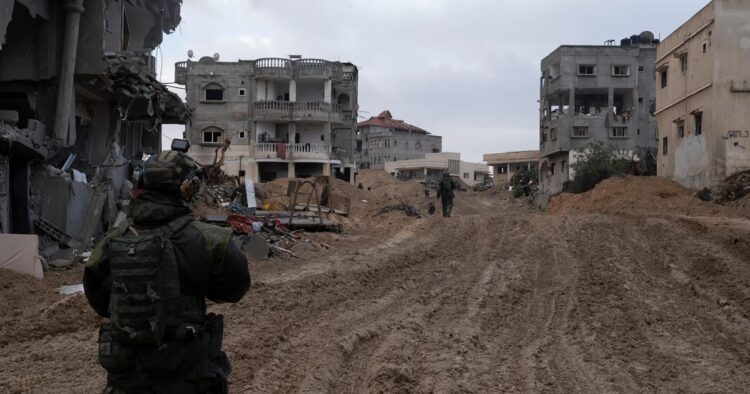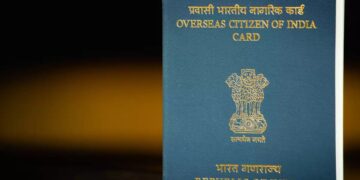In southern Gaza, the neighborhood of Bani Suheila in the city of Khan Younis has witnessed extensive damage as the Israeli military continues its ground and air campaign in the region. The military’s pursuit of underground Hamas tunnels has led to the demolition of a cemetery, with graves unearthed and a skull discovered amidst the rubble.
The military showcased the destruction to foreign journalists, revealing a 140-meter-wide pit that once housed the cemetery, now giving way to what the army claims is a Hamas attack tunnel underneath. Combat engineers released a video depicting massive explosions as part of the demolition process.
Amid the ongoing conflict that health officials say has claimed over 26,000 Palestinian lives, the Israeli military’s targeting of holy sites has faced criticism from Palestinians and rights groups. These critics argue that such actions constitute an assault on cultural heritage and may be considered a war crime under international law, which provides special protection to cemeteries and religious sites.
Israel contends that Hamas uses these sites for military purposes, removing the protections afforded to them. The military claims that locating and dismantling Hamas tunnels is crucial to achieving its goal of defeating the militant group, even if it involves collateral damage to sacred spaces.
Israeli Brig. Gen. Dan Goldfus, leading journalists around the site, emphasized the military’s necessity to find the tunnels. He took journalists inside a tunnel shaft beneath a destroyed mosque and cemetery, revealing rooms allegedly used by Hamas militants as a command and control center. The tunnel, stretching 800 meters, was said to be part of a larger network in southern Gaza.
Israel has previously made similar arguments regarding operations in and around Gaza hospitals. Goldfus showcased the tunnel’s rooms, including offices, an operations room, and living quarters, asserting that the tunnel was used to plan attacks against the military.
The destroyed cemetery, identified as the Shuhadaa Bani Suheila graveyard through satellite analysis, has become a focal point of contention. Since declaring war against Hamas, Israel has accused the militant group of using civilian sites in Gaza as cover for military activities.
The retaliatory offensive on Gaza has displaced a significant portion of its population, with 161 mosques reportedly damaged by the Israeli military. UNESCO has called on both Hamas and Israel to refrain from attacking culturally significant sites.
Under the Rome Statute, which established the International Criminal Court, cemeteries and mosques receive special protection as “civilian property.” The destruction of these sites may be considered a war crime, according to the U.S. Commission on International Religious Freedom. Israel argues that these sites lose their protection when used for military purposes, weighing operational gains against civilian losses.
Goldfus justified the destruction of the mosque, claiming it was necessary after militants fired at Israeli forces from within its grounds. He stressed the challenge of operating in the area without causing harm to sacred sites and human remains, citing the difficulty in dismantling the tunnel network while minimizing damage. UNESCO’s call for preservation underscores the broader concerns surrounding the protection of cultural heritage amid the ongoing conflict.

















Comments